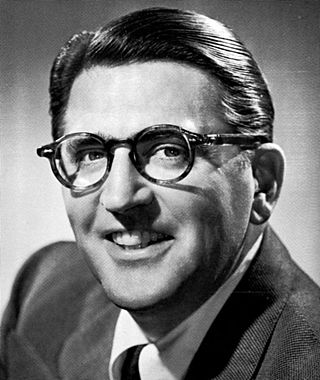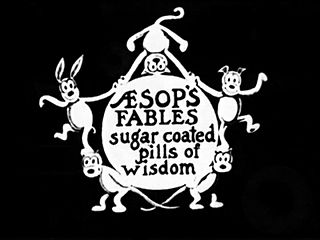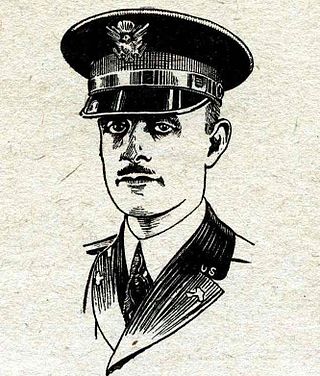
Dixie Lucile Reiniger Willson (30 July 1890 - 6 February 1974) was an American screenwriter, as well as an author of children's books, novels, and short stories.

Dixie Lucile Reiniger Willson (30 July 1890 - 6 February 1974) was an American screenwriter, as well as an author of children's books, novels, and short stories.
Willson was born in Estherville, Iowa to John David Willson, a lawyer, and Rosalie Willson née Reiniger, a primary school teacher and piano tutor. [1] In 1894 her parents moved to Mason City where her two brothers were born, John Cedric Willson and Robert Meredith Willson, who later came to prominence as the composer of the Broadway hit musical The Music Man .
Willson produced numerous children's books, as well as many short stories and poems. Her best-known children's book is titled Honey Bear and contains illustrations of Maginel Wright Barney, sister of Frank Lloyd Wright. The story, told in verse, is about a baby being taken from his bassinet and into the forest by a bear. Tom Wolfe cites the book as the one which first made him wish to be a writer. [2]
In Where the World Folds Up at Night, Willson chronicled the daily operations of the Ringling Brothers and Barnum and Bailey Circus, with which she performed for a brief time. Several other circus-themed books, including Little Texas and Mystery in Spangles, owe much to her close friend Bird Millman, a high-wire artist to whom she dedicated Honey Bear.
|
|

Robert Reiniger Meredith Willson was an American flautist, composer, conductor, musical arranger, bandleader, playwright, and writer. He is perhaps best known for writing the book, music, and lyrics for the 1957 hit Broadway musical The Music Man and "It's Beginning to Look a Lot Like Christmas" (1951). Willson wrote three other musicals, two of which appeared on Broadway, and composed symphonies and popular songs. He was twice nominated for Academy Awards for film scores.

Howard Roger Garis was an American author, best known for a series of books that featured the character of Uncle Wiggily Longears, an engaging elderly rabbit. Many of his books were illustrated by Lansing Campbell. Garis and his wife, Lilian Garis, were possibly the most prolific children's authors of the early 20th century.

A show tune is a song originally written as part of the score of a work of musical theatre or musical film, especially if the piece in question has become a standard, more or less detached in most people's minds from the original context.

Aesop's Fables is a series of animated short subjects, created by American cartoonist Paul Terry. Produced from 1921 to 1934, the series includes The Window Washers (1925), Scrambled Eggs (1926), Small Town Sheriff (1927), Dinner Time (1928), and Gypped in Egypt (1930). Dinner Time is the first cartoon with a synchronized soundtrack ever released to the public.
Holling Clancy Holling was an American writer and illustrator, best known for the book Paddle-to-the-Sea, which was a Caldecott Honor Book in 1942. Paddle to the Sea won the Lewis Carroll Shelf Award in 1962. In 1966, Bill Mason directed the Oscar-nominated short film Paddle to the Sea, based on Holling's book, for the National Film Board of Canada.

Edward Rowe Snow was an American writer and historian.

The Under Dog and Other Stories is a short story collection written by Agatha Christie and first published in the United States in 1951, Dodd Mead and Company. The title story was published in booklet form along with Blackman's Wood in the United Kingdom in 1929 by The Reader's Library. The first US edition retailed at $2.50.

Joseph Patrick McEvoy, also sometimes credited as John P. McEvoy or Joseph P. McEvoy, was an American writer whose stories were published during the 1920s and 1930s in popular magazines such as Liberty, The Saturday Evening Post and Cosmopolitan.
Mary Francis Shura Craig was an American writer of over 50 novels from 1960 to 1990. She wrote children's adventures and young adult romances as Mary Francis Shura, M. F. Craig, and Meredith Hill; gothic novels as Mary Craig; romance novels as Alexis Hill, Mary Shura Craig and Mary S. Craig; and suspense novels as M. S. Craig.
Kurt Wiese was a German-born book illustrator, who wrote and illustrated 20 children's books and illustrated another 300 for other authors.
Mary Ann Willson was an American folk artist whose work remained undiscovered for over a century, until it appeared in an exhibition of American Primitive paintings in 1944. Little is known of her life, but evidence suggests that she may have been one of the first American watercolorists.

Bird Millman O’Day was one of the most celebrated high-wire performers of all time. During the “Golden Age of the American Circus,” she was a premiere attraction with the Ringling Brothers and Barnum and Bailey Circus.
Judson Pentecost Philips was an American writer who wrote more than 100 mystery and detective novels under the pseudonyms Hugh Pentecost and Philip Owen, as well as under his own name. As Judson Philips, he also wrote numerous pulp sports novels in the 1930s.

Sterner St. Paul Meek was an American military chemist, early science fiction author, and children's author. He published much of his work first as Capt. S.P. Meek, then, briefly, as Major S.P. Meek and, after 1933, as Col. S. P. Meek. He also published one story as Sterner St. Paul.
P. F. Volland Company of Chicago, Illinois published poetry books, greeting cards, music, children's books, calendars, cookbooks, and children's occupational games, between 1908 and 1959. The press was noted for using new printing processes, including off-set printing techniques, and color illustrations. The P. F. Volland Company is also known for the many significant artists and writers whose work it published.

Evangel Allena Champlin Best, better known by her pen name Erick Berry, was an American author, illustrator and editor.

Arthur Somers Roche was an American author of novels, short stories, and two plays.
Ve Elizabeth Cadie was an early twentieth century American illustrator of children's books and magazines, a stylist, and a designer.
Iris Vinton (1905–1988) was an American writer of children's literature. She wrote several children's historical stories, mostly based on fact. One of her books, Flying Ebony (1956), was turned into a Walt Disney production titled Mooncussers in 1962.

Gertrude Alice Kay was an American children's literature illustrator and author best known for her work in fairy tales and beginner novels. She was active during America's Golden Age of Illustration.